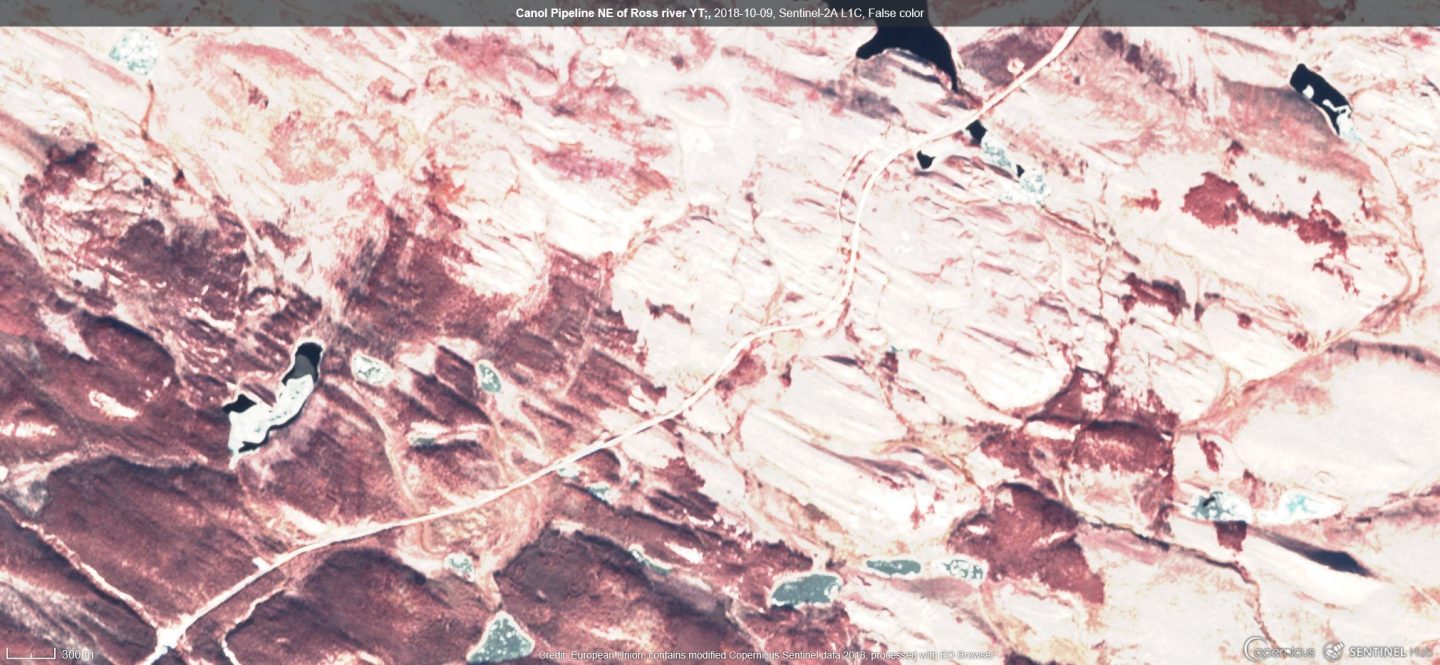Dr. Mike Wulder presented a very different perspective of Canada to the UNBC Colloquium audience on November 2nd. Working for the Canadian federal government and with a variety of remote sensing data provides Dr. Wulder with a national level perspective on Canada’s forests and vegetated environment. His presented a number of uses of satellite imagery for purposes at a national scale. It was fascinating to watch the change in Canada’s vegetation over time through successive Landsat images.
It was a challenging and intriguing to shift gears from thinking about forest ecology at stand and landscape scales to considering the state of our forests at a national scale. For example, Dr. Wulder used terms such as recovery and fragmentation when speaking about forests. However, it became clear that the definitions of these terms at a national scale and when viewed with satellite imagery, may be very different than the common usage at a stand or landscape scale. For example, some measures of recovery of vegetation after a disturbance, were considered to be the return of vegetation with the potential to grow greater than 5m in height and greater than ten percent cover. This level of recovery may be substantially different than an ecologist’s definition of recovery where the forest may be considered recovered when it has achieved a state that may provide similar ecological services to the forest in place prior to disturbance. This makes sense, when reminded that the definition of recovery relates to a measure that is required for global scale reporting that is used to determine if an area will return to a forested state or alternatively an agricultural field or urban environment.
We learned that the availability of remote sensing data and the opportunities to utilize the data have been growing exponentially over the last several years. This talk has likely inspired a number of us to explore how satellite imagery may be incorporated into our research projects. The potential availability of data down to 1m resolution and the ability to provide stand and crown level metrics is certainly something that I will be exploring.
If I had an opportunity to ask a question I would like to have asked Dr. Wulder to discuss further the use of the fragmentation metric. As with the question of recovery, it would be interesting to understand the context of this metric. From an ecological perspective, fragmentation is a significant concern for wildlife species that require a certain amount of unfragmented forested habitat that provides specific ecological services (i.e. old forest with contiguous mature tree canopy). When measuring fragmentation, what degree of recovery is required in order that the landscape is no longer considered fragmented? If the re-vegetation measure is less than recovery to a similar pre-disturbance state, this may not be sufficient for a number of species for which fragmentation is considered important. Perhaps the fragmentation metric is being used as a metric for other purposes than a measure of intact habitat?
Overall a very engaging speaker presenting the exciting advances and potential in technology that is rapidly becoming accessible to many!


Recent Comments